What's New
Displaying results 1 - 10 of 4899
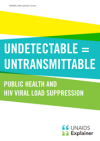
Resource | Publications,
The evidence supporting U = U addresses the drivers of criminalization of HIV transmission by challenging the outdated norms that HIV infection is a death sentence and that HIV is easily transmitted to sexual partners.
HIV stigma and criminalization remain key barriers in many countries to reaching the targets in the 2021 Political Declaration on HIV and AIDS and the Global AIDS Strategy 2021–2026.
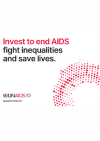
Resource | Publications,
As the UN's only cosponsored Joint Programme, UNAIDS has spearheaded a coordinated, multisectoral HIV response for nearly 30 years. The 2021 UN Political Declaration on HIV and AIDS, supported by UNAIDS' Global AIDS Strategy 2021-2026, charts a clear path to end AIDS as a public health threat by 2030. Taking this path is a sound political and financial choice that will save lives.
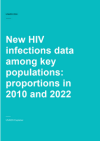
Resource | Publications,
On 1 January 2024, the Journal of Acquired Immune Deficiency Syndromes (JAIDS) published an article describing the findings from UNAIDS and co-authors on new HIV infections among key populations1 and their sexual partners in 2010 and 2022, by world region. For the first time, UNAIDS and partners have used expanded data sources and refined, dynamic HIV transmission models to make estimates of new HIV infections with time trends within each country and key population.
This article, prepared by UNAIDS and partners, highlights the new methods used to gain a better understanding of new HIV infections among key populations. The article focuses primarily on the new methods and necessary improvements for future estimates. This document places the findings in the wider context of the AIDS epidemic and response for their advocacy and programmatic use. For additional information, data and nuances it is suggested to refer to the full article.
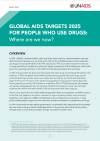
Resource | Publications,
In 2019, UNAIDS published Health, rights and drugs: harm reduction, decriminalization and zero discrimination for people who use drugs which laid out the irrefutable evidence that people who use drugs were being left behind in the HIV response. The report demonstrated how the war on drugs was failing in its efforts to reduce the supply and demand of illicit substances, while at the same time causing untold harm to the health and well-being of people who use drugs. In 2024, five years later, the data show that people who inject drugs are still being left behind in the response. In 2022, the global median HIV prevalence among people who inject drugs was 5% across 50 reporting countries, seven times higher than among the rest of the adult population (aged 15–49 years). This figure hides significant geographical and population-based disparities. Among reporting countries, HIV prevalence ranged from 0% to 51%. Among the 16 countries with gender disaggregated data, the reported median HIV prevalence among men who inject drugs was 9%, while it was nearly double (15%) among women who inject drugs. There is some good news: the Global AIDS Strategy 2021–2026: end inequalities. end AIDS contains, for the first time, targets on law reform, reduction in stigma and discrimination, and community leadership in the response. In 2023, a United Nations Human Rights Council resolution on drug policy included explicit support for harm reduction and decriminalization for people who use drugs.
Resource | Presentations,
Get an overview of the HIV/AIDS situation in Timor-Leste. Browse and view charts and graphs illustrating data on the country's basic socio-demographic indicators, HIV prevalence and epidemiology, risk behaviors, vulnerability and HIV knowledge, HIV expenditures, and national response.
Resource | Presentations,
Get an overview of the HIV/AIDS situation in the Philippines. Browse and view charts and graphs illustrating data on the country's basic socio-demographic indicators, HIV prevalence and epidemiology, risk behaviors, vulnerability and HIV knowledge, HIV expenditures, and national response.
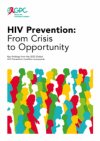
Resource | Publications,
A new report, HIV Prevention: From Crisis to Opportunity shows that HIV infections continue to decline in countries that are part of the Global HIV Prevention Coalition (GPC) faster than in the rest of the world.
Eleven GPC focus countries have reduced their annual number of new HIV infections by at least 66% since 2010. By comparison, the average reduction in new HIV infections since 2010 globally is 38%. The GPC is a coalition of 38 countries working together to accelerate declines in new HIV infections to achieve the target of having 95% of the people who are at risk of HIV accessing effective combination prevention options.

Resource | Publications,
The Global Fund strategy for 2023-2028 has three mutually reinforcing contributory objectives. One critical objective is Maximizing the Engagement and Leadership of Most Affected Communities to Leave No One Behind, which specifically applies to GC7.
Resource | Presentations,
Get an overview of the HIV/AIDS situation in Papua New Guinea. Browse and view charts and graphs illustrating data on the country's basic socio-demographic indicators, HIV prevalence and epidemiology, risk behaviors, vulnerability and HIV knowledge, HIV expenditures, and national response.
Resource | Presentations,
Get an overview of the HIV/AIDS situation in Pakistan. Browse and view charts and graphs illustrating data on the country's basic socio-demographic indicators, HIV prevalence and epidemiology, risk behaviors, vulnerability and HIV knowledge, HIV expenditures, and national response.





